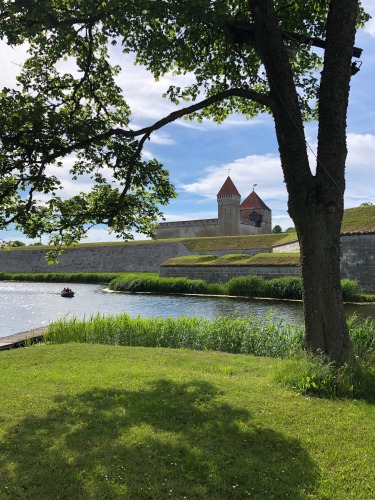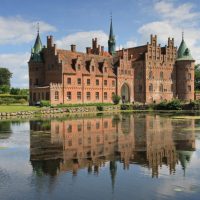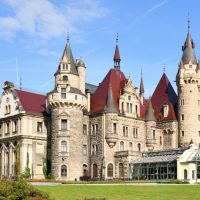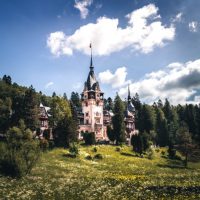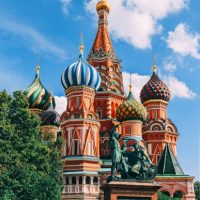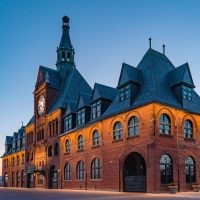Estonia is well-known for its historic capital city, sauna culture, and strong family values.
The country has two remarkable United Nations Educational, Scientific and Cultural Organization (UNESCO) World Heritage sites.
There are over 1000 castles and manors that date back as far as the 13th century.
These estates are now open to the public for visitation.
Estonia is home to many popular attractions and, regardless of your travel style or interests, the country is sure to have something for you to do, like a visit to a magical castle, a day at the beach, or going hiking in some beautiful locations.
The Most Beautiful Castles in Estonia
1. The Kuressaare Castle
The Kuressaare Castle is a fortress located in Kuressaare, Estonia.
The castle is listed as a UNESCO World Heritage Site.
The earliest mention of the castle was in the 1380s and could possibly be older than this.
It was built by the Bishop of Ösel–Wiek (Saare-Lääne).
The castle is considered to be one of the best-preserved medieval fortifications in the country.
The architecture of the castle is late Gothic in style, while its design is described as being simplistic in nature.
The main building is square and surrounds a central courtyard.
There is one defense tower in the north of the castle that is 121 feet in height.
At the top of the building sits a defense gallery that was restored in the 1980s.
Several renovations were done to the structure over the years.
The main building consists of a cellar with a sophisticated hypocaust heating system and the main floor houses many of the rooms.
Today, the castle is home to the Saaremaa Museum.
2. The Kadriorg Palace
The Kadriorg Palace is an estate located in Tallinn, Estonia.
It was founded by Russian Tsar Peter I.
The structure was constructed in the 18th century and is a Petrine Baroque palace.
The palace was named after Russian Tsar Peter I’s wife, Catherine I.
The name of the palace in German and Estonian both mean “Catherine’s valley”.
It was built by Gaetano Chiaveri and Mikhail Zemtsov according to the designs of Nicola Michetti.
The castle is open to visitors and boasts an immaculate Kadriorg Art Museum.
Inside the museum are paintings from Estonia and Russia.
The garden surrounding the palace is modeled on Versailles and contains several beautiful flowerbeds, fountains, and hedges.
The palace is open to the public year-round.
3. The Alatskivi Castle
The Alatskivi Castle is a medieval neo-gothic castle located in Alatskivi, Estonia.
The castle was rebuilt in the 19th century by Baron Arved von Nolcken and modeled after the royal residence of Balmoral in Scotland.
It was a gift and a token of his love for his wife, Josephine.
The family occupied the residence for 20 years.
The castle underwent another renovation between 2005 and 2011.
Visitors can become acquainted with the lifestyle of the aristocratic family that once lived in the castle and the servants that worked for them.
There are three floors to explore and visitors can make their own souvenirs.
The castle plays a significant role in the history and culture of Peipsiveere (the coast of Lake Peipus).
Today, the castle hosts a visitor center that attracts tourists from all over the world.
4. The Laitse Castle
The Laitse Castle is a medieval fortress located in Laitse, Estonia.
It is reminiscent of a medieval knight’s castle.
The castle was built in 1892 by Woldemar von Uexküll.
The castle’s interior was completely reconstructed during the time of the Republic of Estonia.
There is a labyrinth garden that has been planted next to the structure and contains over 1,000 thuja plants.
The castle is open to visitors and houses a restaurant, guest rooms, and seminar rooms.
It’s a very popular local destination for weddings.
Today, the castle often hosts events such as murder mysteries in a style reminiscent of the time that the castle was constructed.
5. The Kiltsi Castle
The Kiltsi Castle is a medieval fortress, located in Lääne-Viru County, Estonia.
It is registered as a Cultural Monument of Estonia.
The castle was constructed on the ruins of a vassal fortress.
The main structure of the building was completed in 1790 by H. J. von Benckendorff.
The von Krusenstern family owned the castle during the 19th century.
From 1803 to 1806, Adam Johann von Krusenstern led the first Russian round-the-world trip, while residing at Kiltsi Castle.
In 1995, an admiral’s room was opened in the castle to celebrate his life and legacy.
Today, the castle is open to the public and visitors can view exhibitions on the life of the von Krusenstern family, including Adam Johann, his son, and his grandson.
The public is welcome to rent out the castle for birthdays, weddings, and other celebrations.
6. The Sangasta Castle
The Sangasta Castle is a medieval neo-gothic style fortress, located in Valga Makond, Estonia.
The castle is marked with a yellow National Geographic window, which indicates that it is a rich source of history and culture with regard to Estonia.
G. M. von Berg was the last Lord of Sangaste.
He took over the castle from his father in 1866 and was inspired to restore the castle.
The inspiration for the castle and the surrounding grounds came from Windsor castle in England.
The castle’s construction lasted for seven years, from 1874 to 1881.
Originally, the home only had 99 rooms.
This was because homes with 100 rooms or more were reserved for the Czar only.
After reconstruction, the castle boasted as many as 149 rooms.
The castle consists of three floors.
On the first floor, you’ll find the official rooms, such as an English-style hunting room, a Spanish ballroom, and a Gothic room, as well as the counts’ bedroom.
On the second floor, you’ll find the family rooms, a billiards room, and a library.
On the third floor are the servant’s and guest bedrooms and the watch tower can be accessed from this floor.
7. The Suuremoisa Castle
The Suuremoisa Castle is a fortress located in Hiiu County, Estonia.
The construction of the castle was commissioned by Countess Ebba-Margaretha von Stenbock (née De la Gardie) and lasted between 1755 and 1760.
The castle was constructed in Baroque-style architecture.
In 1796, Count Jacob Pontus Stenbock exchanged the manor for Uuemõisa manor to cover his debt.
He had inherited the castle from his mother, the countess.
The castle changed hands and became the official property of Otto Reinhold Ludvig von Ungern-Sternberg.
Today the castle is open to visitors from all over the world who come to marvel at the culture, architecture, history, and archeology of the castle and its inhabitants through the on-site museum, the bookstore, and the souvenir store.
Hiiumaa Vocational School designed a flower garden for the castle.
In addition to the flower garden, the castle also boasts an English park where visitors walk through the gardens and enjoy the ambiance.
8. The Paide Castle
The Paide Castle is located in Järva maakond, Estonia.
The castle was constructed using local white limestone and construction commenced in 1265.
The first building that was constructed, the octagonal Tall Hermann Tower, was destroyed by the Red Army in 1941.
In 1993, the tower was restored to celebrate the 650th anniversary of the St George’s Night Uprising.
The castle has changed hands many times and was under attack several times, which resulted in its destruction.
There were several renovation efforts over the centuries, aiming to preserve the castle, but not all were successful.
Today, the castle is mainly in ruins, but it does still have a small museum that is dedicated to the history and culture of the once mighty castle.
Visitors are welcome to the sight to experience what the museum has to offer.
9. The Sillapea Castle
The Sillapea Castle is located in Rapina, Estonia.
It was constructed in 1842 in the classical style.
Today, the castle is a nationally protected monument due to its architecture and rich history.
In the 8.7 hectares surrounding the castle, you will find a beautiful garden and manor park.
Inside the castle grounds, you will find the Garden Museum and the Rapina Local Lore.
The park consists of three distinct parts, including a park with vegetation that lowers down to the lake, a forest park at the Vohandu River that includes a pavilion, and another park with trees and bushes, bordered by a path.
Visitors from around the globe come to view the rich history and culture the castle has to offer.
10.The Koluvere Castle
The Koluver Castle is a fortress located in Lääne County, Estonia.
There has been a castle in this location since the 13th century.
The bishop of Saare-Lääne came into possession of this castle in 1439 and it was the residence of the bishop at the time.
The castle was constructed on an artificial island.
The castle features a square-shaped tower that dates back to the 13th century, making it one of the oldest structures in the country.
The castle, initially of military importance, lost its importance during the residence of the von Löwen family and instead became a home.
The interior underwent changes from the Rococo style to the neo-Gothic style during the transition and leading into the 19th century.
Additions were made to the castle, including stables and granaries.
Over the centuries, many fires ravaged the structure.
However, it is still an exemplary example of Estonian architecture today.
Estonia Safety Overview
READ THE FULL REPORT: Estonia Safety Review
Safety Index: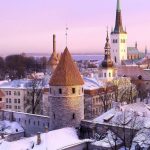
- OVERALL RISK: LOW
- TRANSPORT & TAXIS RISK: HIGH
- PICKPOCKETS RISK: MEDIUM
- NATURAL DISASTERS RISK: LOW
- MUGGING RISK: MEDIUM
- TERRORISM RISK: LOW
- SCAMS RISK: LOW
- WOMEN TRAVELERS RISK: LOW
Frequently Asked Questions
Does Estonia currently have any royal families?
No.
In the past, there have been numerous monarchs that have ruled all over parts of Estonia, but since then, the country has been proclaimed a democratic and independent republic.
Estonia is now a solitary parliamentary republic with a prime minister, named Kaja Kallas, and a president called Alar Karis.
Will Estonia ever have a King?
It is highly unlikely that there will ever be a king throned in your lifetime.
Who was the last king of the country?
Nicholas II was the last Duke of Estonia.
He was ruler up until 1917 when he and his family were murdered by the Bolsheviks.
Who was the first king of Estonia?
In 1220, King Valdemar II of Denmark was appointed to be the first ruler of the country.
